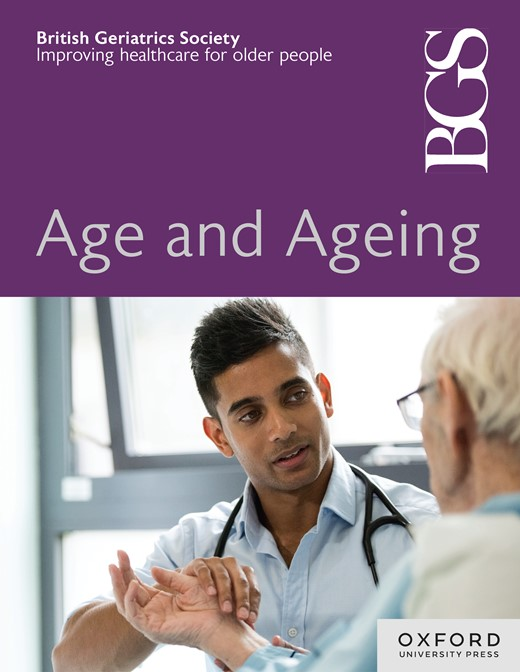日间中心老年人功能性物理治疗班;客户调查
IF 6
2区 医学
Q1 GERIATRICS & GERONTOLOGY
引用次数: 0
摘要
背景 我们的长期住宿护理设施为大约 117 名日间护理客户提供物理治疗服务。作为本地质量改进计划的一部分,我们希望评估客户对日间中心功能性物理治疗课程的看法,以帮助确定他们对课程的运动强度、在课堂上听从指导和提问的能力的看法。该课程的重点是促进学习环境、提高客户的健康素养和功能独立性。由于预防跌倒是国家老年人计划(NCOP)和国家虚弱教育的关键,因此调查问题涉及跌倒频率和对跌倒的恐惧。调查方法 这是一项针对日间中心物理治疗客户的调查。所有老年人(65 岁以上),这是一项定性调查,发放给日间中心接受物理治疗的客户。所有老年人(65 岁) 结果 70% 的回复率。100%的人表示在向物理治疗师提问时感觉很自在,而且运动指导清晰易懂。96%的人表示身体能够跟上课程强度。80% 的人表示课程强度适中,20% 的人表示课程强度较高,0% 的人表示课程强度较轻松。84% 表示害怕跌倒。17%的人表示在过去一年中没有跌倒过。68%的人表示去年摔倒过 1-3 次,15%的人表示摔倒过 3 次。报告的上课次数:4% 0-5 节课,18% 5-10 节课,78% 超过 10 节课。结论 调查结果提供了有价值的反馈,并支持预防跌倒的措施应解决对跌倒的恐惧。在客户满意度/对运动强度的感知方面有重要发现。下一步工作将包括为这一人群量身定制物理治疗课程,其中包括跌倒恐惧、优化运动强度、促进健康知识普及以及运动处方的最佳实践。此外,还将考虑在理疗课后对平衡能力进行进一步的客观测试,以确定运动课是否成功。本文章由计算机程序翻译,如有差异,请以英文原文为准。
Day Centre Functional Physiotherapy Classes for Older People; Client Survey
Background Our Long-Term Residential Care facility provides physiotherapy services for approximately 117 Day Care clients. As part of our local Quality Improvement Programme, we wished to assess client perception of Day Centre Functional physiotherapy classes to help ascertain their perception regarding exercise intensity of classes, ability to follow guidance in class and ask questions. Emphasis of the class is to promote a learning environment, improve health literacy and functional independence of clients. As Falls Prevention is key re National Programme for older people (NCOP) and National Frailty Education, questions related to falls frequency and fear of falls prevalence. Methods This was a survey distributed to our Day Centre clients who attend physiotherapy. All Older adults (> 65 years), This was a qualitative survey distributed to our Day Centre clients who attend physiotherapy. All Older adults (> 65 years) Results 70% response rate. 100% reported feeling comfortable asking Physio instructor questions & that exercise guidance was clear and understandable. 96% reported being physically able to keep up with class intensity. 80% reported class intensity as moderate, 20% as high, 0% reported class intensity as easy. 84% reported a fear of falling. 17% reported no fall in the previous year. 68% reported 1-3 falls, 15% reported > 3 falls in last year. Class attendances reported: 4% 0-5 classes, 18% 5-10 classes, 78% more than 10 classes. Conclusion Results obtained from the survey have provided worthwhile feedback and supports that Falls prevention measures should address fear of falls. Significant findings on client satisfaction/perception of exercise intensity noted. Next steps will include tailoring physiotherapy classes for this demographic to include fear of falling, optimising exercise intensity, promoting health literacy and best practice for exercise prescription. Also, consideration of further objective testing of balance post physio class programme period to ascertain success of exercise classes.
求助全文
通过发布文献求助,成功后即可免费获取论文全文。
去求助
来源期刊

Age and ageing
医学-老年医学
CiteScore
9.20
自引率
6.00%
发文量
796
审稿时长
4-8 weeks
期刊介绍:
Age and Ageing is an international journal publishing refereed original articles and commissioned reviews on geriatric medicine and gerontology. Its range includes research on ageing and clinical, epidemiological, and psychological aspects of later life.
 求助内容:
求助内容: 应助结果提醒方式:
应助结果提醒方式:


